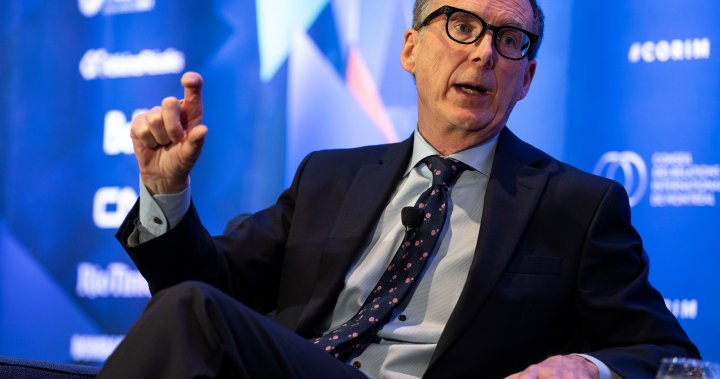Signals that Ottawa wants more domestic investment from Canadian public pension funds are being amplified by some members of the business community who argue there’s more these large pools of capital can do to boost Canada’s economy.
But the pension plans themselves are pushing back against suggestions that anyone in government should dictate how they invest Canadians’ retirement savings.
An open letter sent to Finance Minister and Deputy Prime Minister Chrystia Freeland on March 6 urged the Liberals to amend rules governing pension funds to encourage more Canadian investment. It has been signed by nearly 100 current and former executives from Canada’s business community.
“Canada has great companies, true global champions. These competitive businesses deserve our support, and we must create many more. Increasing investments in Canada should be a national priority,” reads the letter, sponsored by Montreal-based investment management firm Letko, Brosseau & Associates Inc.
The vast majority of the CEOs supporting the push are from the mining and energy sector, which also disproportionately makes up listings on the Toronto Stock Exchange. The list also includes the top executives from telecom giants Rogers Communications Inc. and Telus Communications Inc., grocers including Empire Co. Ltd. and Metro Inc., as well as National Bank of Canada – the sole representative from Canada’s Big Six banks.
Letko Brosseau laments the decline in pension fund holdings that are allocated to publicly traded Canadian firms. Roughly four per cent of Canadian funds’ equity investments were allocated domestically at the end of 2022, down from nearly 28 per cent in 2000, according to Pension Investment Association of Canada data.
This is despite pension funds holding roughly 37 per cent of institutional savings in Canada, according to the letter, putting it on par with Canada’s big banks.
“I think it’s a pity,” Peter Letko, one of the firm’s founding partners, told Global News in an interview last weekend.
“Pension funds have money that is there for the long term. It’s very stable. It can withstand a lot of volatility, meaning it can take on quite a bit of risk.
“It’s just perfect for investing in the equity capital of businesses, and equity capital is what it takes to grow an economy. So seeing this flow away from it has been very disturbing for us.”
The Liberal government has indicated that Ottawa is looking at how it might put Canadian pension funds toward growing the economy.
The 2023 fall economic statement said the government was planning to “work collaboratively with Canadian pension funds to create an environment that encourages and identifies more opportunities for investments in Canada by pension funds.”
“The federal government believes that continued domestic investments by Canada’s pension funds have the potential to boost Canada’s economy and create good careers for people across the country,” the FES said.
Freeland met with executives from Canada’s nine largest pension funds on March 8 in the midst of preparations for the Liberals’ 2024 budget, set to be tabled on April 16.
She told reporters the next day that Canadian pension funds are “one of the crown jewels of our country” and confirmed that she spoke to the fund leaders about how to “encourage” domestic investment.
“We said that we were committed as a government to working collaboratively with Canada’s pension funds to help them find more opportunities to invest here in Canada, our remarkable country,” Freeland said.
Canada’s public pensions are indeed among the top performers worldwide, according to a 2021 McGill University analysis comparing Canadian funds with their global counterparts.
Financial news and insights
delivered to your email every Saturday.
Financial news and insights
delivered to your email every Saturday.
That report found that Canadian pension funds “came out on top on every metric” including asset performance when compared with 250 funds across 11 countries, the report’s author, Sebastien Betermier, said in an interview with Global News.
Canadian public pension funds have a number of strengths including their independent governance structure that let them operate at an “arm’s length” from government, Betermier said.
Pensions in Canada also largely manage their investments in-house, saving on costly fees, and provide competitive compensation to attract top talent to the funds.
In response to proposals about focusing pensions’ investments on Canadian benefits, some funds have pushed back on the idea.
The Canada Pension Plan Investment Board (CPPIB) said in a March 8 statement to Global News that it is not positioned to weigh in on national economic policy.
However, the CPPIB also noted that much of the fund’s success is thanks to having “utmost clarity in our singular focus on achieving financial returns for the people who give us their money for their retirement security.”
The statement concluded that the pension funds “are not designed to achieve regional economic development or corporate subsidies.”
The Ontario Municipal Employees Retirement System (OMERS) also released a statement on March 7 pushing back against attempts to dictate the flow of capital from the pension fund, noting that 25 per cent of its assets are already invested in Canadian sources.
“Any attempt to mandate investments in certain prescribed asset classes or components of our economy would limit our flexibility and make it extremely difficult to continue to deliver on our pension promise to the more than 600,000 Canadians that we serve,” the statement read.
A spokesperson for the Ontario Teachers’ Pension Plan (OTPP) told Global News in a March 13 statement that Canada is one of its “key focus markets.” The statement noted that OTPP has invested $100 billion in Canada, making up 35 per cent of its total allocated funds, the highest of any region in the world.
Betermier notes that the four per cent figure highlighted in the Letko Brosseau letter refers only to the proportion of funds’ equity investments that are allocated to Canadian firms. He says Canadian assets are much more prevalent elsewhere in the pension portfolio, largely in the forms of real estate, infrastructure and fixed-income products like bonds.
Evan Siddall, the CEO of Alberta Investment Management Corp. (AIMCo), wrote in an op-ed in the Globe and Mail last fall that the analysis of funds’ investments in Canada through the lens of equities alone is too narrow.
Investments in infrastructure and bonds, on the other hand, provide the kind of long-term and stable returns that funds often find desirable to maintain the solvency of their clients’ pensions, Betermier says.
“The funds have invested largely at home when they felt it made sense for them to do so,” he said.
Letko argues that pension funds are failing to see the bigger picture by putting more of their equity portfolio in foreign firms rather than focusing on Canadian companies.
“They can’t say that they’re looking for the best returns. What they’re trying to do is achieve the least volatility in their returns,” he says.
Improving the returns from Canada’s publicly traded firms will create a “virtuous cycle” of growth that will benefit not just the economy, but the pensions themselves, Letko said.
Canada’s large public firms are liable to create more large-scale projects with reliable access to capital. He said that translates to more jobs, which in turn improves inflows to pension funds as more Canadians contribute to funds.
“There’s a big multiplier effect,” he said. “Pension fund managers don’t see that.”
The Caisse de dépôt et placement du Québec (CDPQ), which is not covered by federal pension laws, does have a dual mandate to support the provincial economy while maintaining returns for pensioners. A spokesperson for the CDPQ highlighted that the fund has invested $88 billion in the province, $10 billion of which came last year alone.
“Our investments in Québec made a strong contribution to our performance – last year and in general,” read a CDPQ statement to Global News on March 13.
Letko said he is not in favour of hard minimums on how much of a pension fund’s equity investment should be allocated to Canadian firms.
Rather, he advocates for a reserve system that would discourage investing in foreign firms by forcing funds to “reserve” a portion of the investment that is taken off the value of those assets.
Letko’s partner Daniel Brosseau explained the system with an example at the House of Commons finance committee last fall: A $100 investment in a Canadian company is valued at $100, but an investment in an Indonesian bank, for instance, would be valued at $80 and $20 is put in the reserve.
Putting such a system in place increases the financial hurdles to invest outside of Canada and would make it cheaper and more attractive to keep that money in the country, the firm argues.
“We believe that pension funds should be able to invest anywhere in the world,” Letko told Global News. “But if they’re investing in riskier areas, let’s have that little cushion.”
The finance committee’s pre-budget recommendations to the government included the creation of a reserve model.
Betermier says that rather than directly legislating ways to encourage pensions to invest more domestically, Ottawa ought to take a look at why Canada isn’t already a more attractive place to invest in companies or projects and solve problems there.
“Once you make your own assets more competitive and more appealing to investors, the capital will come.”
Federal Conservative Leader Pierre Poilievre also points the finger at the Liberal government for failing to covet more domestic investment from pension funds.
“The question is why aren’t (pensions) doing it without government encouragement? The answer is because the governments have made this an un-investible country where you can’t get anything done,” he told reporters in Vancouver on March 9.
One “red flag” for long-term investors looking at any jurisdiction is a “volatile” policy environment, Betermier said.
Putting money into major infrastructure developments like a pipeline or provincial highway could be riskier if investors expect the government of the day could reverse progress on a project halfway through construction, Betermier explained.
He gave the example of Ontario Premier Doug Ford’s proposal to ban tolls on future roads in the province, a move that would discourage investors who previously banked on proceeds from Canada’s highway projects.
“That makes you think twice before you run such an investment,” he said.




